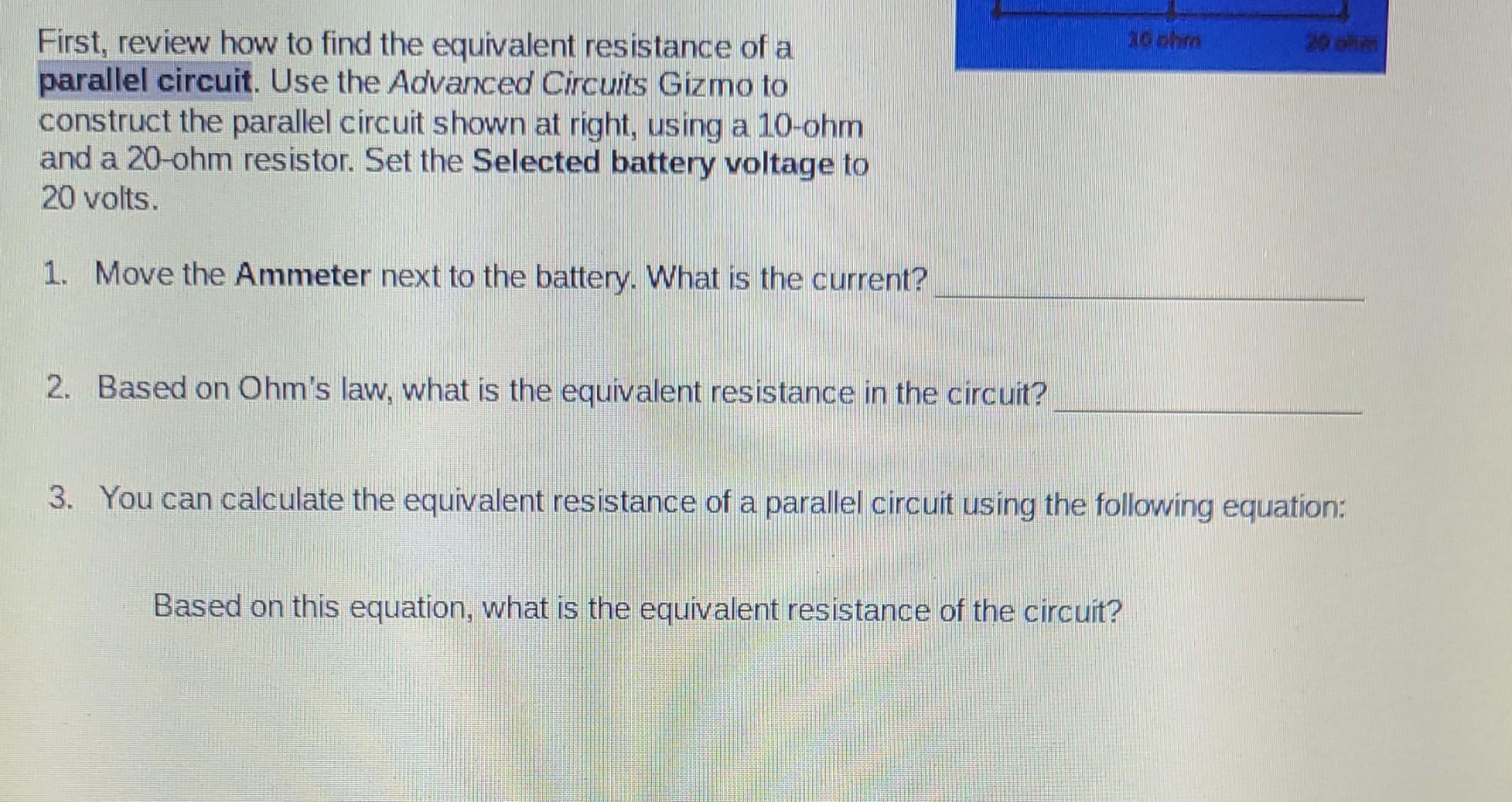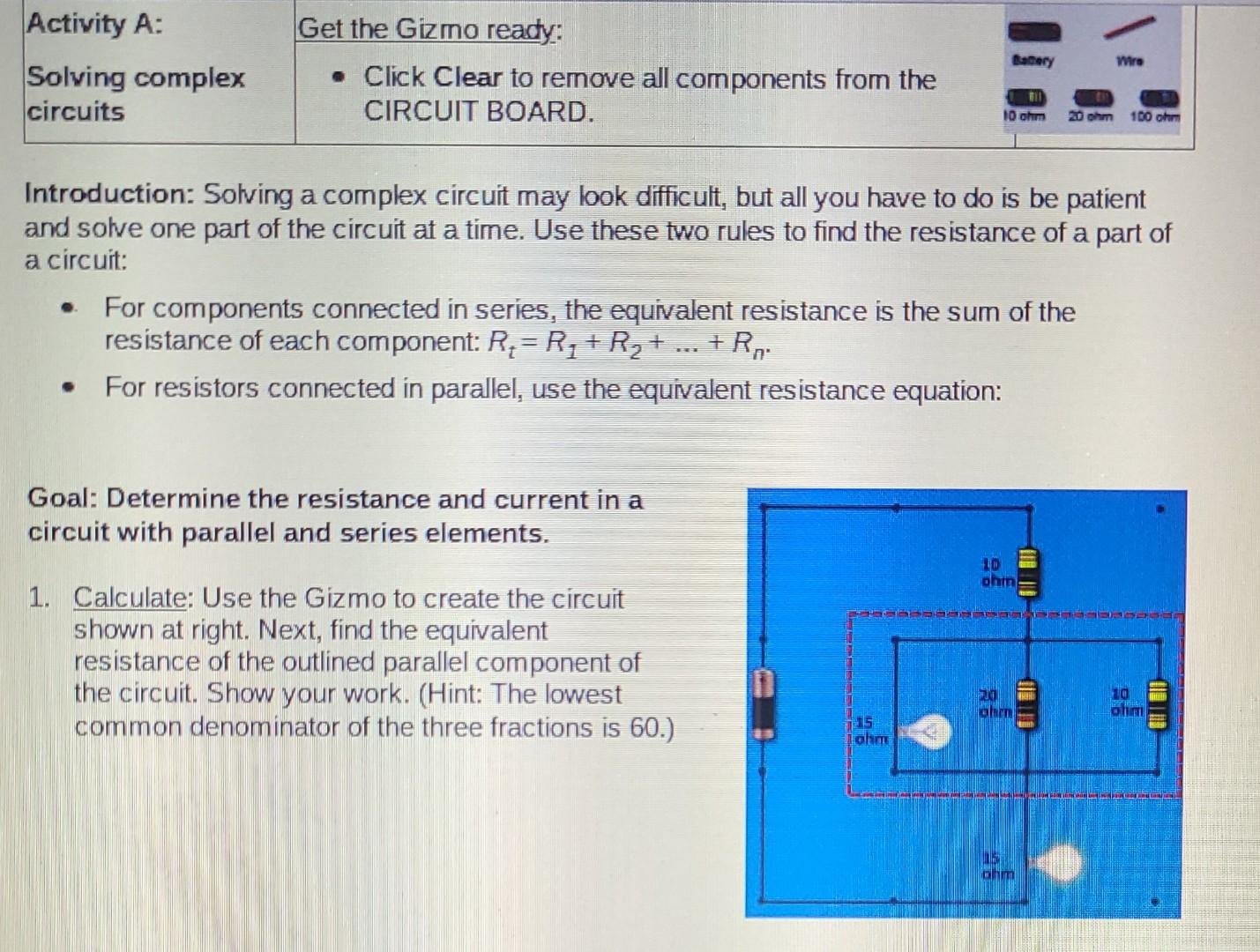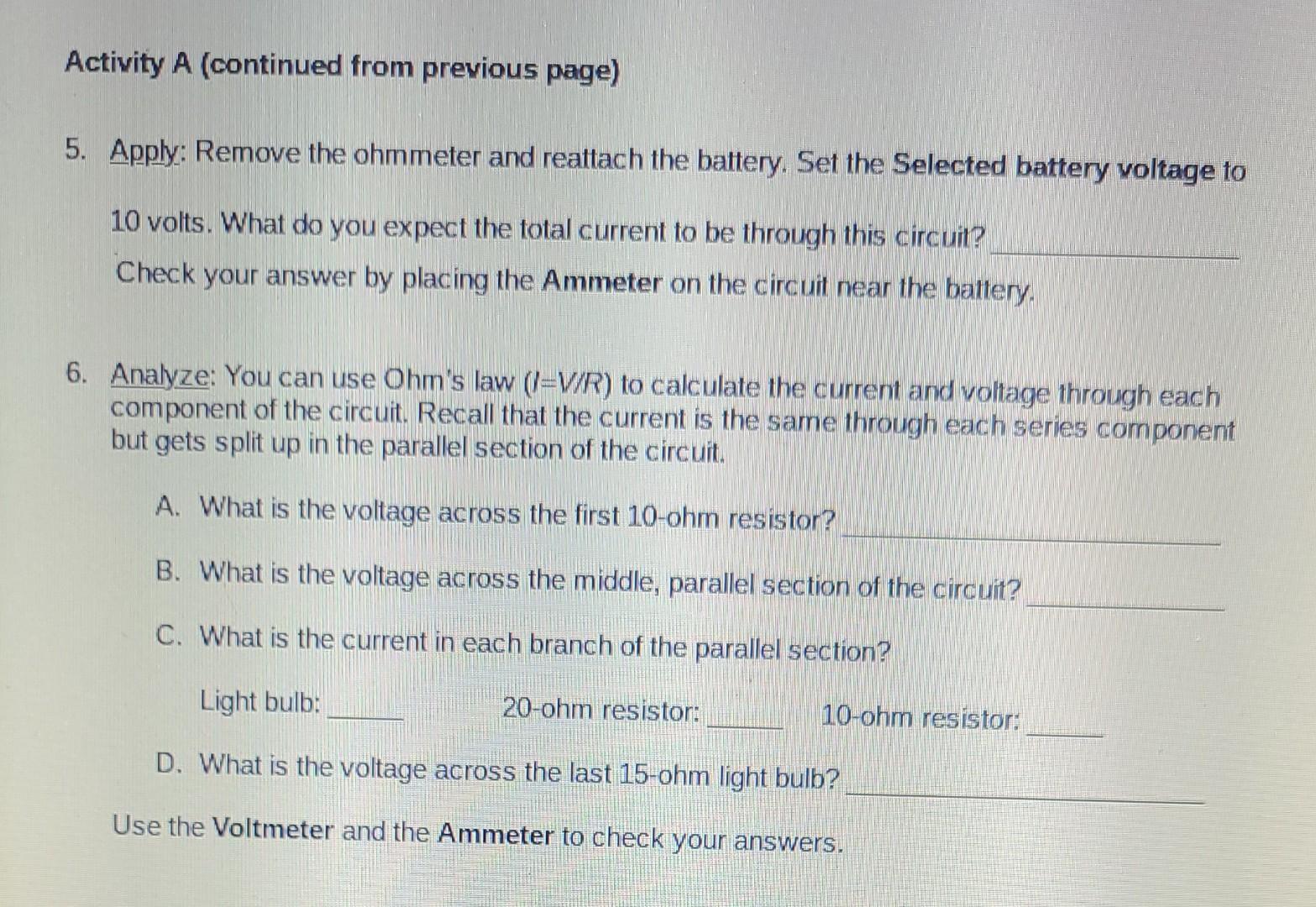Answered step by step
Verified Expert Solution
Question
1 Approved Answer
[Note to teachers and students: This Gizmo was designed as a follow-up to the Circuits Gizmo. We recommend doing that activity before trying this






[Note to teachers and students: This Gizmo was designed as a follow-up to the Circuits Gizmo. We recommend doing that activity before trying this one.] Vocabulary: circuit breaker, equivalent resistance, fuse, Ohm's law, parallel circuit, series circuit Prior Knowledge Questions (Do these BEFORE using the Gizmo.) 10 ohm 100 ohm 20 ohm 1. What is the mathematical relationship between current, resistance, and voltage? 2. What is the equivalent resistance (total resistance) of the series circuit shown at left? Gizmo Warm-up In the Circuits Gizmo, you learned how to use Ohm's law: 1 = V/R, to determine the current in parallel and series circuits. But how do you find the resistance and current in a complex circuit that has both series and parallel elements? First, review how to find the equivalent resistance of a n 10 ohm First, review how to find the equivalent resistance of a parallel circuit. Use the Advanced Circuits Gizmo to construct the parallel circuit shown at right, using a 10-ohm and a 20-ohm resistor. Set the Selected battery voltage to 20 volts. 1. Move the Ammeter next to the battery. What is the current? 2. Based on Ohm's law, what is the equivalent resistance in the circuit? 10 ohm Based on this equation, what is the equivalent resistance of the circuit? 20 ohm 3. You can calculate the equivalent resistance of a parallel circuit using the following equation: Activity A: Solving complex circuits Get the Gizmo ready: . Click Clear to remove all components from the CIRCUIT BOARD. Goal: Determine the resistance and current in a circuit with parallel and series elements. . For components connected in series, the equivalent resistance is the sum of the resistance of each component: R = R + R + ... + R. For resistors connected in parallel, use the equivalent resistance equation: 1. Calculate: Use the Gizmo to create the circuit shown at right. Next, find the equivalent resistance of the outlined parallel component of the circuit. Show your work. (Hint: The lowest common denominator of the three fractions is 60.) Battery Introduction: Solving a complex circuit may look difficult, but all you have to do is be patient and solve one part of the circuit at a time. Use these two rules to find the resistance of a part of a circuit: 811 10 ohm 20 ohm 15 1ohm 10 ohin 20 Wire COLEGAPEIOSDRS033 100 ohm 15 ohm 10 ohm Equivalent resistance of parallel component: 2. Interpret: Now that you found the resistance of the parallel part of the circuit, what do you think you will do next? 3. Calculate: Add up the resistance of each part of the circuit to find the equivalent resistance of the whole circuit. What do you get? 4. Check: Remove the battery from the circuit. Connect the two parts of the Ohmmeter to the ends of the circuit, where the battery was attached. What is the resistance? (Activity A continued on next page) Activity A (continued from previous page) 5. Apply: Remove the ohmmeter and reattach the battery. Set the Selected battery voltage to 10 volts. What do you expect the total current to be through this circuit? Check your answer by placing the Ammeter on the circuit near the battery. 6. Analyze: You can use Ohm's law (=V/R) to calculate the current and voltage through each component of the circuit. Recall that the current is the same through each series component but gets split up in the parallel section of the circuit. A. What is the voltage across the first 10-ohm resistor? B. What is the voltage across the middle, parallel section of the circuit? C. What is the current in each branch of the parallel section? Light bulb: 20-ohm resistor: D. What is the voltage across the last 15-ohm light bulb? Use the Voltmeter and the Ammeter to check your answers. 2 10-ohm resistor: 7. Practice: Click Clear. Use what you have learned to find the equivalent resistance of the circuit shown at right. Show your work in the space below. Use the Gizmo to check your answers. Ken
Step by Step Solution
There are 3 Steps involved in it
Step: 1
Answer 1 Ohms law describes the connection between voltage current ...
Get Instant Access to Expert-Tailored Solutions
See step-by-step solutions with expert insights and AI powered tools for academic success
Step: 2

Step: 3

Ace Your Homework with AI
Get the answers you need in no time with our AI-driven, step-by-step assistance
Get Started


